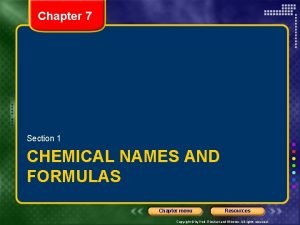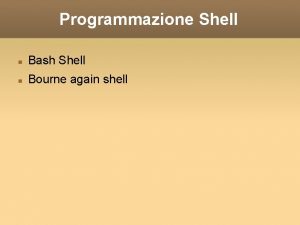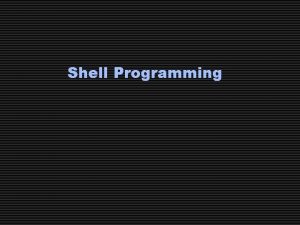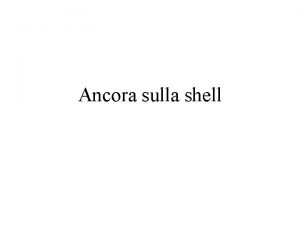Ch7 FISH SHELL FISH Types of Fish There


















- Slides: 18

Ch-7 FISH & SHELL FISH

Types of Fish • There are three basic categories of seafood: fin fish, shellfish and invertebrates. Each category can be further divided into various sub-categories. Seafood Fin Fish Shellfish Invertebrates White fish Oily Fish Crustaceans Molluscs

Fin Fish • Fin fish are cold-blooded vertebrates with gills. • Fin fish have skin and scales which cover the body. They move with the help of fins. • True fish have an internal skeleton and a backbone. • Most fish have a bony skeleton but some fish like sharks have a skeleton made up of pieces of cartilage (hard connective tissue). • Fish can be divided into various sub-categories according to habitat, shape and flesh type.

White fish • Fresh white fish has the following characteristics: Øfirm flesh Øclear and shiny eyes Øred gills Øclean smell. • There are two types of white fish: Round fish and Flat fish.

White Flat fish • Have white flesh and are flat. • Turbot, brill and halibut are very large flat fish, but are readily available from suppliers and popular in many fine restaurants. • The cuts of flat fish are different to those of round fish. • This category includes the following types of fish: plaice, Dover sole, lemon sole, turbot, brill, halibut, etc.

White Round Fish • They are round are relatively common. • Like flat fish, their flesh is white but the cuts are different. • This category includes the following types of fish: cod, haddock, hake, huss, whiting, monkfish, etc.

Oily Fish • All oily fish are round and the flesh is darker than that of white fish. • White fish contain oil, but only in their livers, whereas oily fish have oil throughout their bodies. • This category includes the following fish: salmon, trout, mackerel, tuna, herring, sardines, anchovies, etc.

Shell Fish • Shellfish are aquatic invertebrates used as food. • The main difference between fish and shellfish is their skeleton. • Shellfish have an external skeleton or shell. • There are two main categories of shellfish, crustaceans and molluscs.

Crustaceans • Crustaceans have multijointed shells. • The shells of crustaceans do not grow with the fish; they shed each year with a new one forming to suit their new size. • Examples of Crustaceans are: Lobsters, Crawfish, Prawns and Crab.

Molluscs • Mollusc shellfish have shells but they are not multi-jointed. • Some molluscs are eaten raw, such as oysters, but the remaining need very little in the way of cooking through. • Too much cooking will affect their texture and taste. • Examples of molluscs are: Mussels, Scallops, Oysters and Whelks.

Invertebrates • Invertebrates are spineless marine animals with no outer shell. • They include the squid and octopus family.

Cuts of Fish • Fillets- Deboned long flat pieces of fish without skin • Paupiette- The fillet of fish is laid flat on the table, stuffing is spread on it, and then it is rolled up, tied with a string, to the keep the shape. • Supreme- Large fillets of fish cut on a slant of a large round or flat fish. • Goujons and Goujonettes- Strips approx 8 cm long by 1 cm wide cut from fillets of fish. Goujonettes are cut smaller and are mainly used as a garnish. • Meuniere- Pan-frying of fish, finished with butter noisette, chopped parsley and lemon juice.

Contd…. • Trancon- It is a thick piece of fish 4 - 5 cm thick, cut on the bone from a flat fish like the turbot. It is a fish cutlet or steak with bone. • Darne- A piece of fish cut across and through the bone of a large , whole round fish such which is 23 cm thick. • Mignon- Fillet of fish folded as a cornet (triangular fold as for piping bag). • Fish Farce- Puree of fish, bound with whole egg panada and cream

Cooking of Fish • It is important to cook fin fish thoroughly, but not to overcook it. Proper cooking: develops the flavor, softens the small amount of connective tissue present in fish, and makes the protein easier to digest. • Two cooking methods can toughen fish and destroy the natural moisture and flavor: �cooking at too high a temperature, and �cooking for a too long time. Some common methods of cooking fin fish include: • Grilling, Shallow frying, Deep frying, Steaming, Poaching, Baking, Microwaving

Handling of Fish • A clean working environment is essential in the prevention of contamination when working with fish. • Be sure to wash hands thoroughly before and after handling raw fish. • The work area, cutting boards, and utensils must be thoroughly cleaned with hot soapy water after being exposed and should not be used for other foods until properly cleaned. This will prevent cross contamination of bacteria from the fish to other foods.

Contd… • When working with other foods at the same time as preparing and cooking fish, be sure to use different utensils for each food. • Do not use the same platter for cooked fish as was used for the raw meat, unless it has been properly washed and dried before using. • If any preparation of the fish is done on a cutting board, it should be thoroughly scrubbed with hot soapy water after each use and periodically cleaned with a bleach solution consisting of 1 tablespoon of bleach per gallon of water.

Thank you…!!!! • • For your kind co-operation Ch-7 and the entire course is completed Are you happy? ? ? Once again Betam Amasaganallu!!! • Melkam Bal(Fasika)-Enjoy with • Wait for a minute for Acid Test

Acid Test-Question Write about your teacher
 Shell cleanliness shell soundness shell texture shell shape
Shell cleanliness shell soundness shell texture shell shape Shell membrane of egg
Shell membrane of egg One fish two fish red fish blue fish ride
One fish two fish red fish blue fish ride Ch7 chemical name
Ch7 chemical name Ch7 chemical name
Ch7 chemical name Ch7 chemical name
Ch7 chemical name One fish two fish blowfish blue fish script
One fish two fish blowfish blue fish script All vertebrates
All vertebrates 70 atomic number
70 atomic number Market forms of tilapia
Market forms of tilapia Tema there is there are
Tema there is there are What part of speech is open
What part of speech is open There is there are negative form
There is there are negative form There is there are
There is there are There is there are
There is there are There is there are
There is there are The committee debates these questions carefully
The committee debates these questions carefully Adjetivos demonstrativos
Adjetivos demonstrativos A an any some
A an any some


































